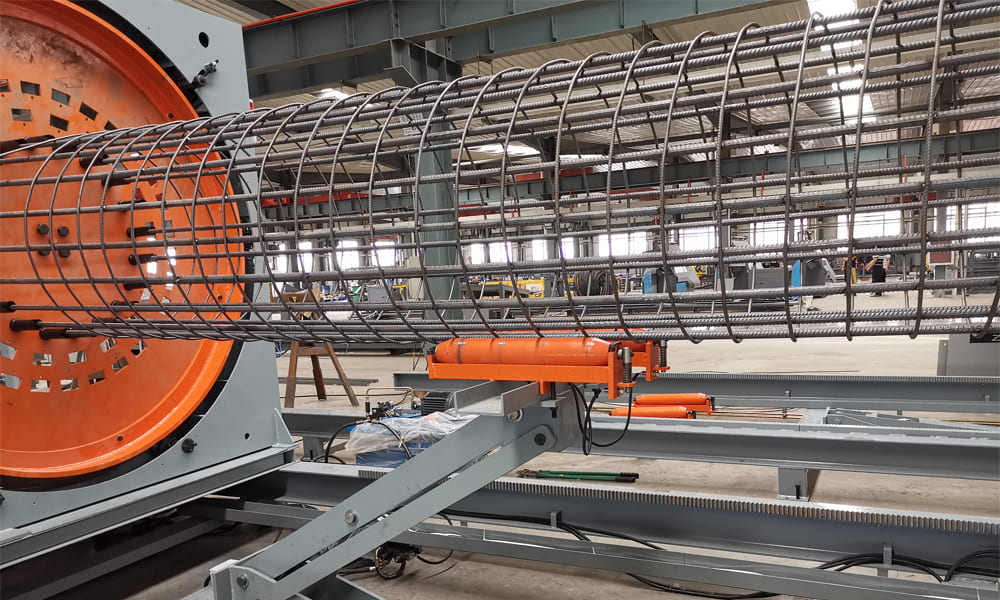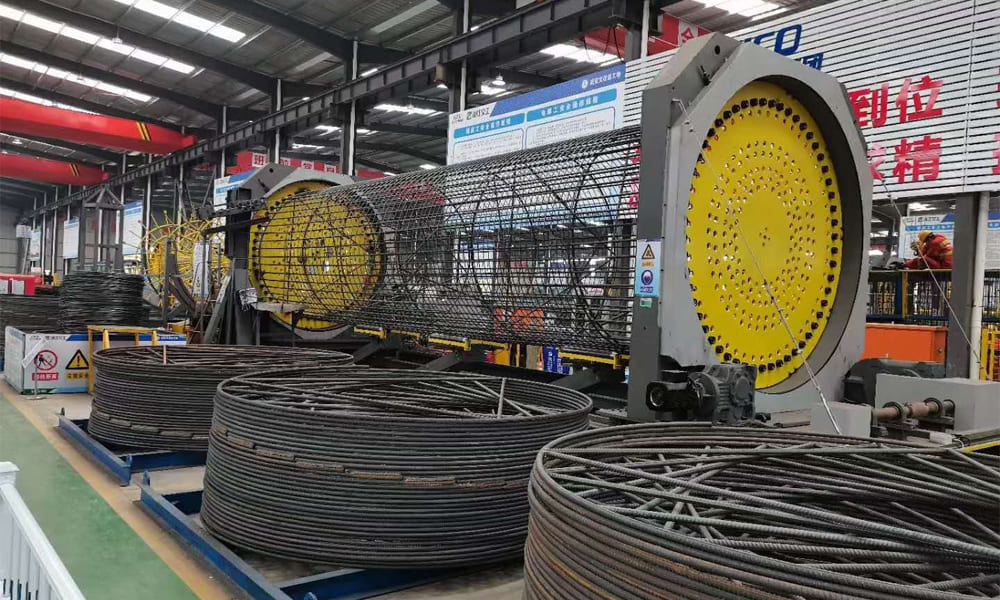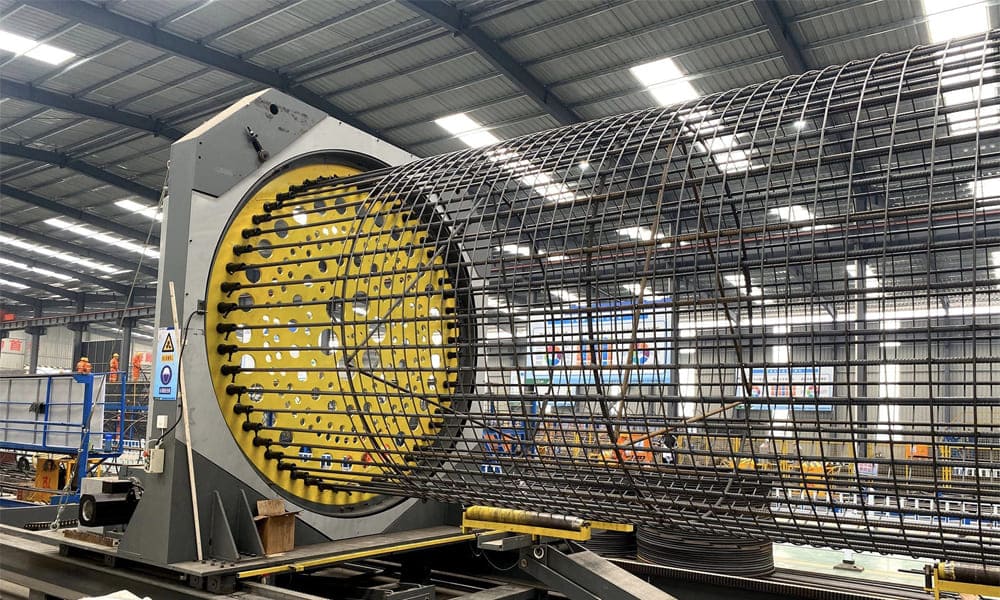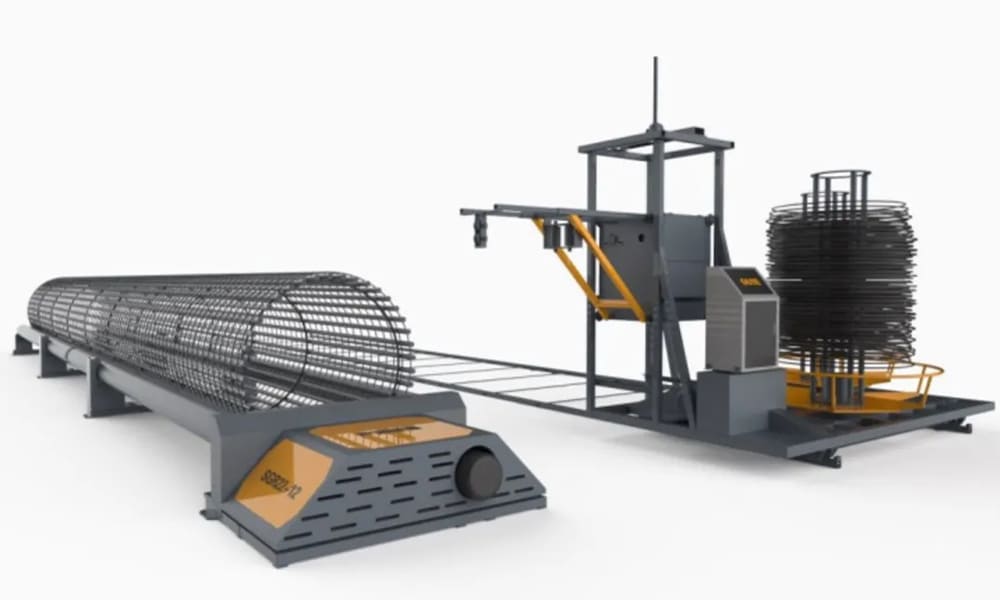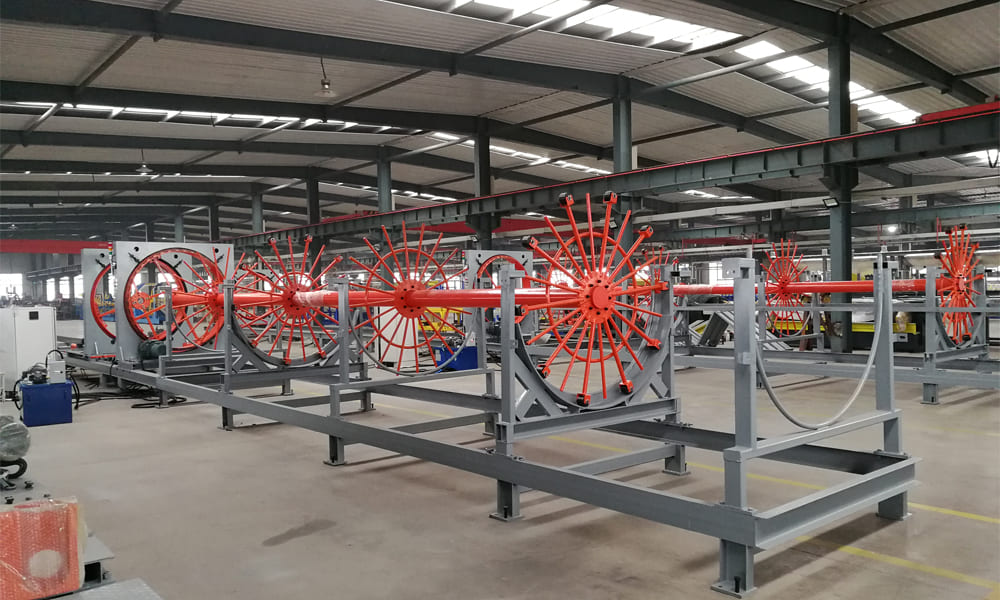Intelligent rebar cage produce processing utilizes a meticulous, step-by-step approach to ensure the construction of durable rebar cages that meet stringent design specifications. This method includes precise cutting, threading, welding, and assembly of steel bars, resulting in high-quality rebar structures essential for modern construction projects.
Step-by-Step Construction Process
- Inspection and Acceptance of Raw Materials
- Verify the qualifications of the steel bar factory by reviewing the factory qualification certificate, raw material quality certificate, and relevant test reports.
- Conduct random inspections of raw materials to ensure they meet quality standards.
- Prepare steel cages in accordance with detailed construction drawings.
- Cutting and Preparing Steel Bars
- Utilize a CNC sawing machine for accurate cutting of steel bars, ensuring clean, precise edges.
- Make sure cut ends are flat to eliminate the need for re-grinding, enhancing efficiency.
- Straighten steel bars before processing to ensure that the end face is perpendicular to the bar’s axis.
- Stagger sleeve connections by a distance of 35 times the diameter of the steel bar for optimal structural integrity.
- Upsetting the Steel Bars
- Upset the cut steel bars according to the specified design requirements.
- Inspect the upset head for any transverse cracks; re-upset any heads that do not meet quality standards, avoiding secondary upsetting.
- Threading the Upset Steel Bars
- Secure the steel bar on the workbench, ensuring it is properly aligned for concentric threading.
- Start the threading operation slowly, then gradually increase the speed to maintain thread integrity.
- Ensure all operators are certified and well-trained in the threading process.
- Check thread length, polish the cross-section, and protect threads with caps or sleeves to prevent damage.
- Batching and Placing Steel Bars
- Sort threaded steel bars by cage section (top, middle, bottom) and reinforcement type (main and additional).
- Position main reinforcements and stirrups on the rolling cage welding machine for efficient assembly.
- Insert main reinforcements into fixed and movable plate templates, ensuring uniform spacing and minimal diameter deviation.
- Welding and Reinforcing
- Pre-bend reinforcements to match the steel cage diameter using an arc bending machine for precise shaping.
- Securely weld reinforcement rings and stirrups to the main reinforcements, ensuring welds are full and free of defects like pores or slag.
- Installing and Assembling
- Utilize a crane to position and weld the completed top cage accurately.
- Attach the sonic detection pipe (outer diameter 57 mm, wall thickness 3.5 mm) using threaded connections for effective monitoring.
- For larger cages with a pile diameter greater than 1.5 meters, arrange four acoustic detection tubes; use three for those less than or equal to 1.5 meters.
- Conduct a thorough inspection of the steel cages and affix identification signs for easy tracking and quality control.
- Final Assembly and Storage
- Pre-assemble the steel cages in the order of bottom, middle, and top sections for streamlined handling.
- Connect the sections using long and short wires equipped with sleeves for secure attachment.
- Ensure proper alignment of sleeves and acoustic detection tubes for consistent performance.
- Move the assembled cages to the storage area, making them ready for use in construction projects.
By following these detailed steps, intelligent rebar cage produce processing ensures the creation of strong, reliable steel cages that comply with all construction specifications and standards. This structured methodology enhances quality and streamlines the construction process, ultimately contributing to successful project outcomes.

